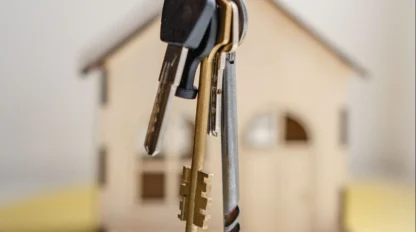Selling a House With Tenants

Selling a house with tenants can be a bit more complex than selling a vacant property, but it’s far from impossible. Whether you’re dealing with leases, coordinating showings, or addressing tenant concerns, the key is to plan carefully and communicate with your tenants.
This guide will walk you through every step, from understanding legal obligations to closing the sale, ensuring a smooth process for you, your tenants, and potential buyers.
Step-by-Step Guide to Selling a House With Tenants
Whether you’re juggling a lease agreement or just want to keep the process smooth for everyone involved, here’s a complete guide to make it work.
1. Know the Laws in Your Area
Before you do anything, get familiar with local landlord-tenant laws. These rules vary depending on where you live, and they’ll determine what you can and can’t do.
For example:
- Can you show the property while the tenants are living there?
- Do you need to give a certain length of notice before selling?
- Are there rules about evicting tenants if the buyer wants a vacant home?
If you’re unsure, consult a real estate attorney or a local expert.
2. Check the Lease Agreement
Your lease agreement is your first resource. Pay attention to:
- Type of lease: Is it a fixed-term lease (e.g., one year) or month-to-month?
- Notice requirements: How much notice do you need to give for showings, inspections, or ending the lease?
- Sale clause: Some leases have a clause about selling, which might outline specific steps.
3. Decide How to Sell: With Tenants or Vacant
You have two main options:
- Sell with tenants in place: This is ideal if your buyer is looking for an investment property with rental income. This saves you the hassle of ending the lease but limits your pool of buyers.
- Sell vacant: A better choice if you’re targeting families or individuals who want to move in themselves. This might require negotiating with your tenants to leave.
4. Communicate Clearly with Your Tenants
Honesty is the best policy here. Let your tenants know your plans to sell. Let them know how it might affect them (e.g., showings, inspections). Also, tell them what their options are – like staying under a new owner or moving out early.
As a pro tip, you can offer reassurance. Selling doesn’t mean they’ll automatically be kicked out. You might even offer incentives like reduced rent or help with moving costs to make the process easier.

5. Handle Showings with Care
Respect your tenants’ privacy. Here’s how to keep things smooth:
- Give proper notice: This could be 24-48 hours, depending on your lease and local laws.
- Coordinate schedules: Try to plan showings when tenants aren’t home.
- Keep it clean: Offer to help with cleaning or tidying up before showings.
6. Market Strategically
When listing your property, be upfront about its tenant-occupied status. Highlight the benefits:
Something like:
- Turnkey investment with reliable tenants.
- Immediate rental income opportunity.
If the property will be sold vacant, note the timeline for when it’ll be ready for occupancy.
7. Negotiate with the Buyer
Potential buyers will want to know the details about your tenants:
- Lease terms and rent amounts.
- Tenant reliability (e.g., payment history).
- Any maintenance issues.
Be prepared to share this info during negotiations. If the buyer wants the property vacant, you’ll need to work out a plan to end the lease early.
8. Offer Incentives to Your Tenants (If Needed)
If you need your tenants to leave before the sale, consider a cash-for-keys agreement. This is where you offer them money or other benefits, like paying moving costs, in exchange for vacating the property by a specific date.
9. Be Flexible
Selling with tenants requires some give and take. Some tenants might resist showings or feel uneasy about the process. Stay patient and work with them to find solutions.
10. Close the Sale
Once you’ve got a buyer lined up and all the tenant-related details sorted, it’s time to finalize the deal. Make sure:
- The buyer understands the tenant’s situation.
- All lease agreements, deposits, and records are correctly transferred.
- You notify the tenants of the new owner – if they’re staying.
Benefits of Selling a House with Tenants
If you’re thinking about selling your property but have tenants living there, it might feel like a challenge at first. After all, many landlords worry tenants could slow down or complicate the selling process.
However, selling a house with tenants can actually work in your favor in several ways. Here’s why keeping your tenants onsite might be the most brilliant move.
You’ll Instantly Narrow Down Your Target Buyer Market
When selling a tenant-occupied property, you don’t need to waste time marketing to individual buyers or families looking for a primary residence. Instead, your home will naturally attract real estate investors or landlords looking to expand their portfolios.
These buyers already understand the rental market and are likely to see the value in a property that has been producing income from day one.
This way, you can save time and effort, as you’ll be targeting people who are genuinely interested in tenant-occupied properties.
Plus, investors tend to look at the bigger picture—such as rental income potential—rather than obsess over minor cosmetic details like families often do.
Investors Love Immediate Income
A home sitting vacant is a money pit for investors—it’s not generating any income, yet expenses like mortgage payments, taxes, and maintenance keep piling up. That’s why having tenants in place can actually make your property more appealing.
When you sell to an investor, they’ll often appreciate the fact that they’re walking into a readymade income stream. With tenants already paying rent, the buyer won’t have to scramble to find new occupants or deal with costly vacancy periods.
Essentially, your existing lease becomes a selling point that highlights the value of your property.
You Can Skip the Tenant Move-Out Process
Asking tenants to move out is not as easy as it sounds. Not only do you have to give proper notice, but you also run the risk of disputes over deposits, cleaning, or damages.
By selling your house with the tenants still in place, you can altogether avoid this headache.
You won’t have to:
- Go through the process of making sure your tenants leave on time.
- Clean up the property after they’ve moved out.
- Handle any last-minute surprises like unpaid rent or damages.
Instead, you can pass the responsibility to the buyer, who will take over the lease and all its terms. This can save you time, money, and stress, making the entire sale much smoother.
Tenants May Be Grateful to Stay
Let’s not forget about your tenants—they’re part of this equation, too. For many renters, moving can be expensive, stressful, and inconvenient. If you sell the property with the lease intact, your tenants don’t have to worry about packing up and finding a new place to live.
Most tenants will appreciate the stability of knowing they can stay in their home until the lease ends. This could make them cooperate more during the selling process, helping with things like keeping the property clean for showings or allowing access to inspections.
A happy tenant can make your job as a seller that much easier.
Your Home Becomes a Turnkey Investment
Turnkey properties—those ready to generate rental income immediately—are in high demand in the investment market.
By selling your property with tenants in place, you’re offering a turnkey investment opportunity to potential buyers. This makes your home more attractive and could even result in a faster sale or higher offers.
Sell Your Home Quickly and Affordably with Grandview Homes
At Grandview Homes, we buy houses as-is, so there’s no need for repairs or cleanup—just take what you want and leave the rest to us. After a quick walk-through, we’ll give you a cash offer and can close in 7 to 10 days or on your schedule.
There are no agent fees, closing costs, or extra expenses—just a simple, stress-free sale.



